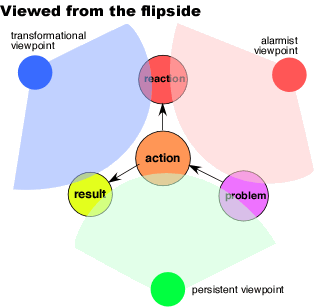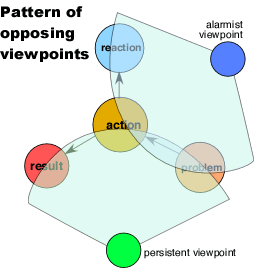Too often managers assume that injustice at work is something to get accustomed to and merely a cost of doing business. Job designs incorporate so much unfairness that revenge dynamics run rampant at work. All this can be easily reversed by seeing the system that generates the revenge for working on the ways to increase fairness that explore below.
Compensation
Getting compensation schemes to seem fair is a tricky business. We quickly take for granted any increase in our pay or benefits. We're prone to envy others who are making more than us for no apparent reason or in disregard of who is actually making the bigger difference. We'll find we're spending too much time listening to rumors about others' compensation if its not public knowledge. We can become condescending toward those who make less than us. We will suffer all those nasty side effects of extrinsic rewards if we become overly concerned with our compensation. All this suggests that compensation rationale, decisions and amounts ought to be transparent and easily trusted. It helps for base pay to get the carrots off the table. Added rewards work best for either no-brainer tasks or teamwork outcomes. Connections between pay and performance ought to be both robust and public knowledge. Differences in pay ought to make sense to both sides of the divide. Compensation needs to be kept in balance with intrinsic rewards.
Workload
Workload seems unfair when it's excessive, spiteful or meaningless. We can judge the amount we've been asked to do in terms of how much others have been tasked, how much time we have to complete it and how complicated the work has become to meet standards. Work seems spiteful when we were given the responsibility without the requisite authority, and when we're likely to fail or embarrass ourselves trying. Work feels meaningless when it gets ignored by others, it gets over-specified so compliance can be micro-managed or the pace gets to intense everyone loses sight of the mission. All these experiences can be turned around easily. Workload gets balanced when assignments get made collaboratively where others can help out or revise the workflow. Revenge can be extinguished by all of these upgrades fairness applied to the manager's job design. Meaning can be restored by routine debriefings and after action reviews to learn from what has failed in plan or execution.
Recognition
When recognition seems unfair to us, we're getting misperceived. Some get stereotyped as pushovers who can be bullied or scapegoats who should take all the blame. We can be valued for our collusion and silence, rather than for our speaking up and thinking for ourselves. We may get marginalized as an expendable tool with no feelings or as a conformist with no viewpoint to express. We might pressured by someone who needs us to be his/her enemy, negative parental figure or control freak so s/he can play the victim. All these injustices can be upgraded systemically. It helps to sit down with individuals and explore how they value themselves, how they want to be seen by others and how they want to change the impressions they make. In these conversations, problem solving emerges to deal with the facets of unfair recognition they're experiencing. The process will yield a profound feeling of getting recognized authentically and fairly.
Cultivation
Job training, feedback, reassignments, goal setting and coaching can seem unfair to us. There can be too little, too much or bad timing of any of these approaches to cultivation. It can feel like we're being groomed to be someone we're not, to feel fake and to act more pretentious. The preparations can work against us rather than with us, in spite of the assistance being for our own good. For cultivation to seem fair, it helps to explore what someone already knows about her/his own talents, passions, values and aspirations. Next comes questions about hidden talents that may not be revealed until "leaving our comfort zone to go out on the skinny branches". Further questions can explore how one's sense of who s/he really is has changed with new experiences and what further changes can be anticipated. All this creates a very different "fair treatment" context for job training, feedback, reassignments, goal setting and coaching. The job design would then include a list of what to cultivate and how to achieve progress in the near term.
Interpretation
Everything we're asked to accomplish, accept, change or create is subject to our own interpretation. Others can interpret everything we do and don't accomplish, accept, change or create. When we're not feeling understood, valued and included by others' interpretations, we're likely to give a negative spin to those requests of us when making our own interpretations. Others' interpretations will seem fair to us when we're given the benefit of the doubt, acknowledged for our original intentions and listened to before getting interpretations imposed on us. Others who are good at trusting their reflective practice, seeing it in another light or taking a different perspective -- are especially effective at creating experiences of fairness for others with their interpretations.
Situation
We can experience injustice in who we work next to or share workspace with for an extended period. We can feel betrayed by how little support, supplies or tools have been provided to get the job done. We can even experience a lack of fairness in the locations we get sent to, the conditions we work under or the interference amidst our attempts to be productive. Insult gets added to injury if our remarks about this injustice get taken as complaining, blame shifting or making excuses. We experience fairness when we feel we've really been heard and understood. Our sense of fairness has been honored. We can have our say without it getting taken wrong, as if we're really respected, trusted and even admired.
Conversation
Conversations seem like betrayals when we discover we've been manipulated, shortchanged, misled or deceived. We feel the urge to get even when a conversation turns against us, puts us down with cheap shots or makes us seem clueless. On the other hand, conversations seem fair when we dealt with honestly, transparently and patiently. We value the difference made by someone who looks after our interests, values the differences we make and recognizes what it takes to produce the results we achieve.
Wrap-up
I've detailed this approach to fairness in these last three posts with the next economy in mind. I anticipate that fairness in job designs will become a feature of how we conduct business in the near future. Meanwhile, the inherent injustice and revenge dynamics built into unfair job designs will serve as a essential force of creative destruction to takedown toxic enterprises so sustainable startups can replace them.






